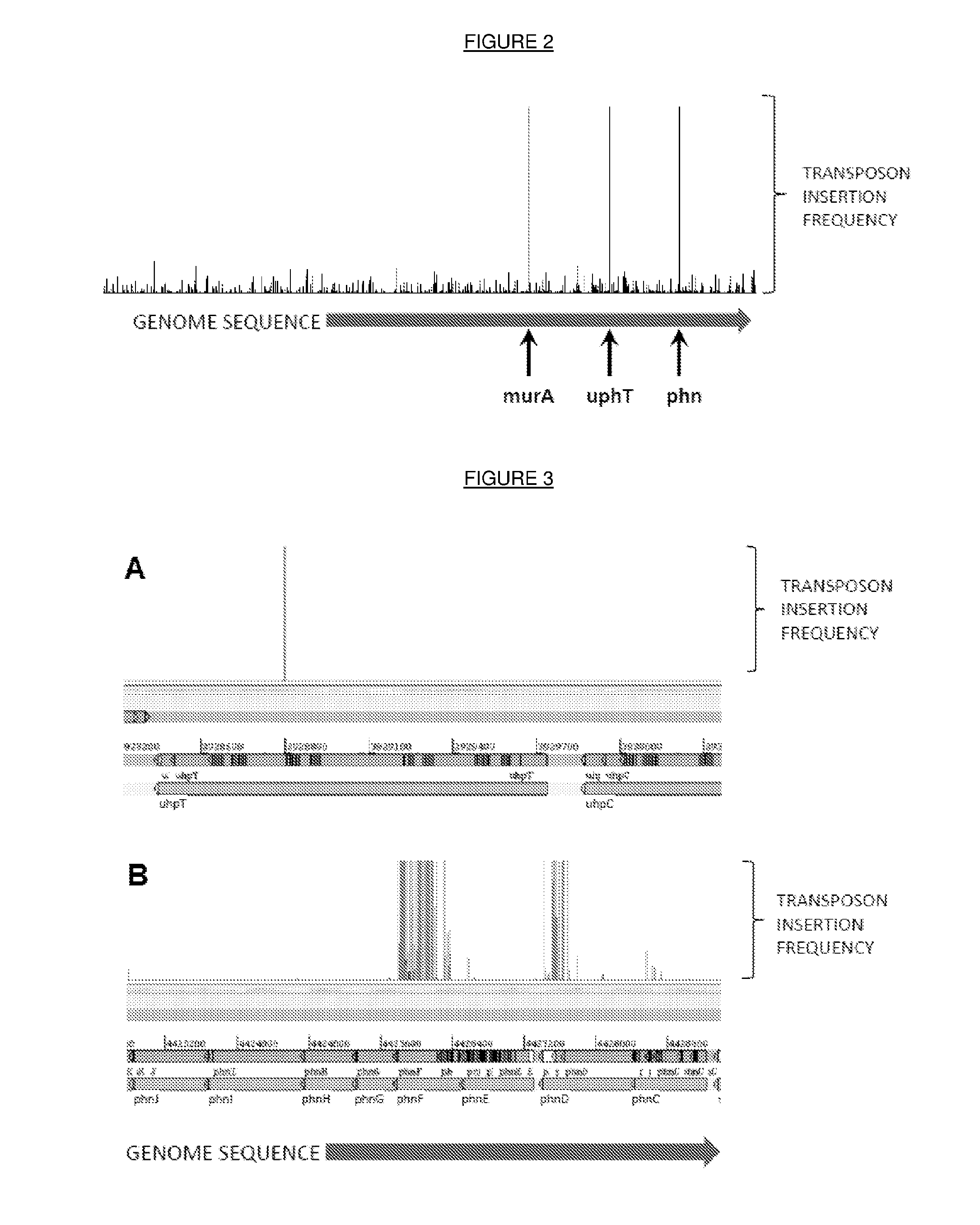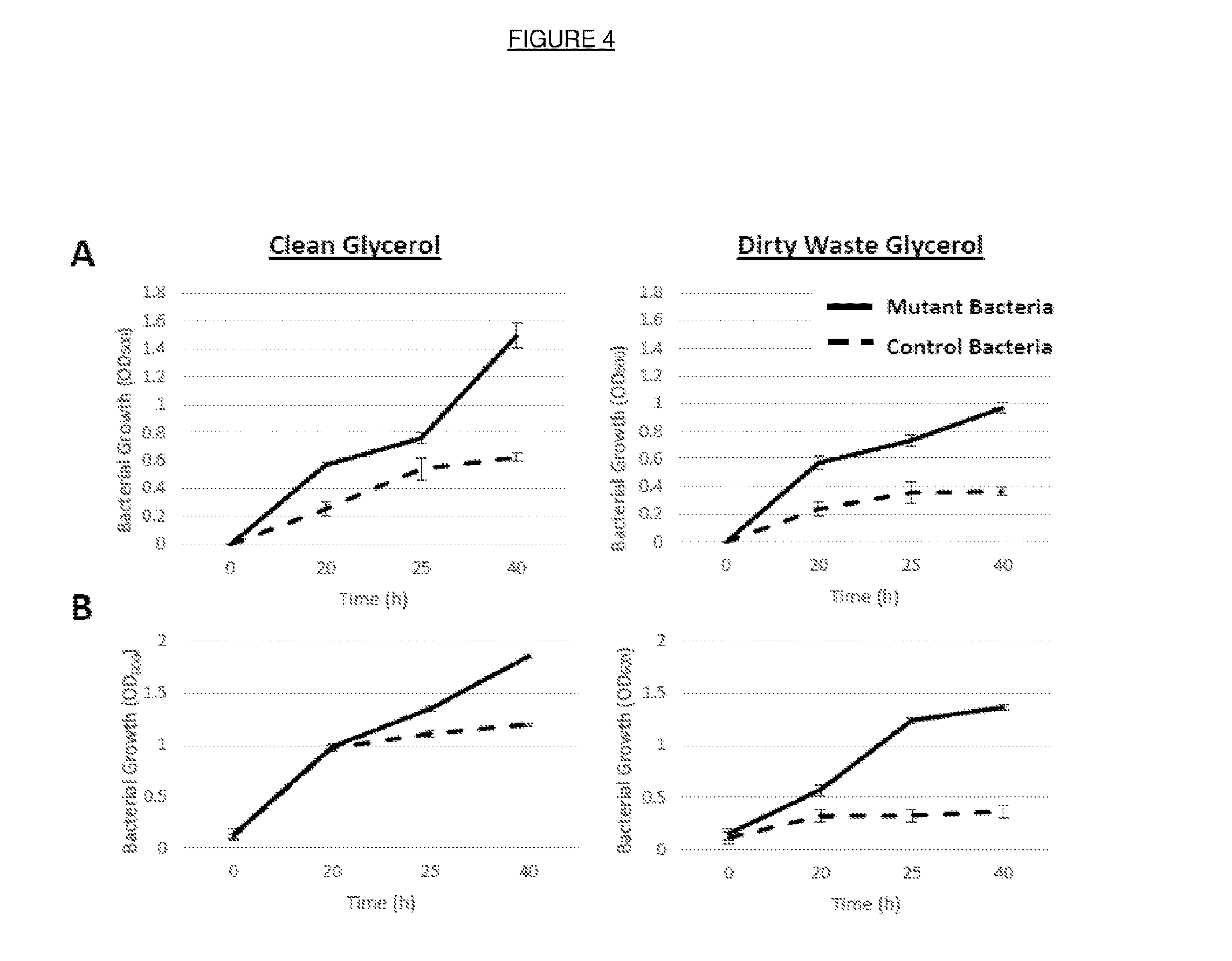Bacterial engineering
a technology of engineering bacterial cells and bacterial strains, applied in the direction of microorganisms, biochemical apparatus and processes, directed macromolecular evolution, etc., can solve the problems of inability to optimize natural occurring bacterial strains for biotechnological use, inability to adapt to biotechnological use, and inability to meet the needs of bacterial growth, etc., to achieve the effect of improving survival
- Summary
- Abstract
- Description
- Claims
- Application Information
AI Technical Summary
Benefits of technology
Problems solved by technology
Method used
Image
Examples
example 1
Production of the Mutant Bacteria which Exhibit Improved Survival and / or Growth in the Presence of Fosfomycin
(i) Construction of Activating Transposon (TnA)
[0113]Plasmids were constructed which incorporate amplifiable nucleotide sequences which act as transposons. The elements of the transposon include the 19 bp mosaic ends which are recognised by a specific transposase enzyme and delimit the transposon, an antibiotic-resistance gene to select for transformants that have resulted from transposition, and an outward oriented promoter at one end of the transposon to activate expression of target genes adjacent to the transposon insertion site.
[0114]Alternative plasmids have been constructed with different outward oriented promoters from different genes from E. coli, Acinetobacter, Pseudomonas or Rhodopseudomonas. Table 1 provides details of the different promoters used. In addition, different host species bacteria require different antibiotic resistance genes to select for transformant...
example 2
Production of Mutant Rhodopseudomonas Palustris Exhibiting Improved Growth in Industrial Waste
[0138]R. palustris is a purple photosynthetic bacterium that belongs to the alpha proteobacteria. It has extraordinary metabolic versatility, growing by any one of the four modes of metabolism that support life: photoautotrophic or photosynthetic (energy from light and carbon from carbon dioxide), photoheterotrophic (energy from light and carbon from organic compounds), chemoheterotrophic (carbon and energy from organic compounds) and chemoautotrophic (energy from inorganic compounds and carbon from carbon dioxide). This metabolic flexibility facilitates the use of this bacterium in biotechnological applications, including bioremediation of industrial wastes.
Preparation of Electrocompetent Rhodopseudomonas Palustris
[0139]Electrocompetent cells for transposon mutagenesis were prepared by inoculating 500 ml of Yeast Peptone Dextrose (YPD) broth with Rhodopseudomonas palustris colonies strea...
PUM
| Property | Measurement | Unit |
|---|---|---|
| optical density | aaaaa | aaaaa |
| optical density | aaaaa | aaaaa |
| volume | aaaaa | aaaaa |
Abstract
Description
Claims
Application Information
 Login to View More
Login to View More - R&D
- Intellectual Property
- Life Sciences
- Materials
- Tech Scout
- Unparalleled Data Quality
- Higher Quality Content
- 60% Fewer Hallucinations
Browse by: Latest US Patents, China's latest patents, Technical Efficacy Thesaurus, Application Domain, Technology Topic, Popular Technical Reports.
© 2025 PatSnap. All rights reserved.Legal|Privacy policy|Modern Slavery Act Transparency Statement|Sitemap|About US| Contact US: help@patsnap.com



